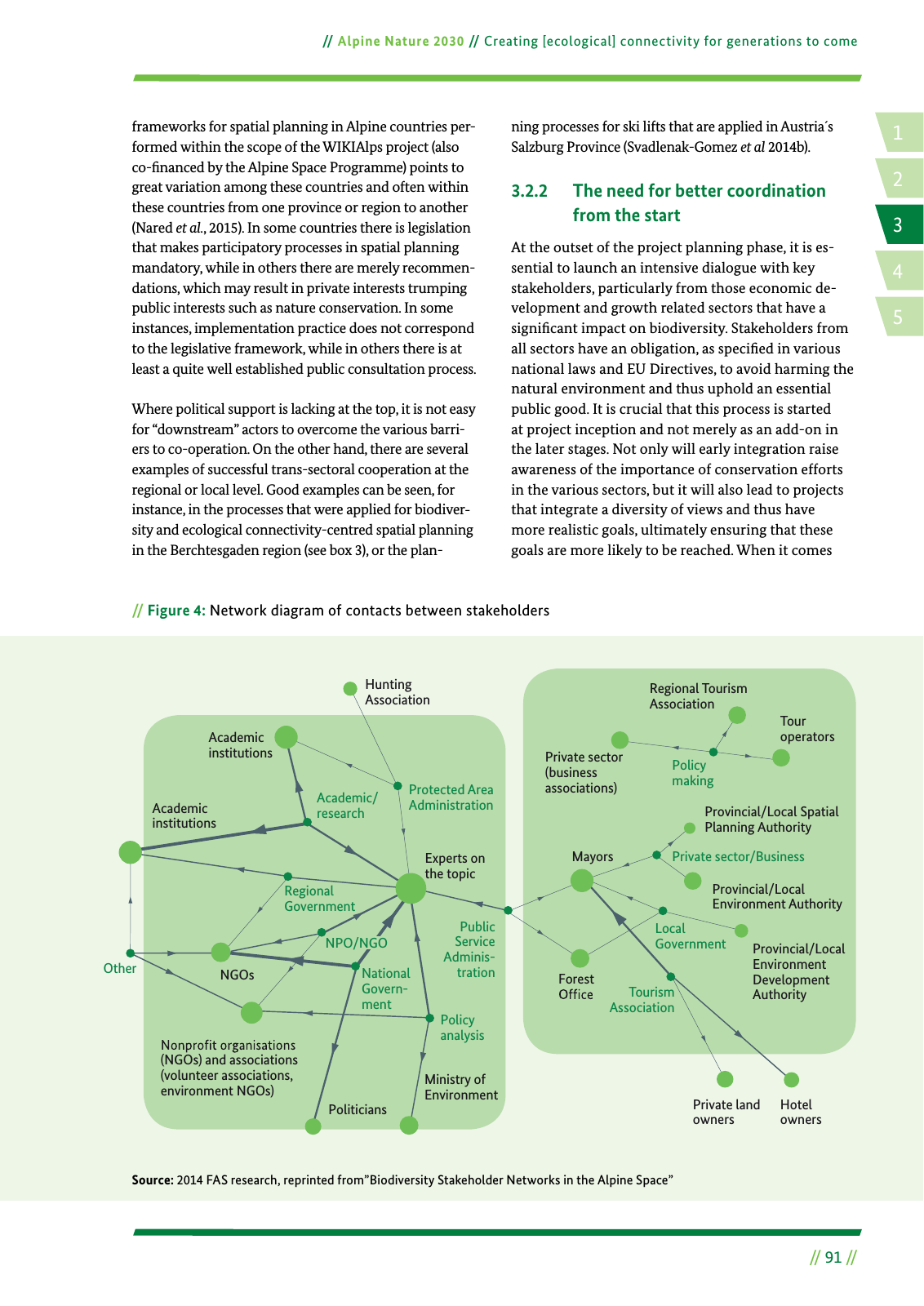14 2 5 3 Alpine Nature 2030 Creating ecological connectivity for generations to come 91 frameworks for spatial planning in Alpine countries per formed within the scope of the WIKIAlps project also co nanced by the Alpine Space Programme points to great variation among these countries and often within these countries from one province or region to another Nared et al 2015 In some countries there is legislation that makes participatory processes in spatial planning mandatory while in others there are merely recommen dations which may result in private interests trumping public interests such as nature conservation In some instances implementation practice does not correspond to the legislative framework while in others there is at least a quite well established public consultation process Where political support is lacking at the top it is not easy for downstream actors to overcome the various barri ers to co operation On the other hand there are several examples of successful trans sectoral cooperation at the regional or local level Good examples can be seen for instance in the processes that were applied for biodiver sity and ecological connectivity centred spatial planning in the Berchtesgaden region see box 3 or the plan ning processes for ski lifts that are applied in Austria s Salzburg Province Svadlenak Gomez et al 2014b 3 2 2 The need for better coordination from the start At the outset of the project planning phase it is es sential to launch an intensive dialogue with key stakeholders particularly from those economic de velopment and growth related sectors that have a signi cant impact on biodiversity Stakeholders from all sectors have an obligation as speci ed in various national laws and EU Directives to avoid harming the natural environment and thus uphold an essential public good It is crucial that this process is started at project inception and not merely as an add on in the later stages Not only will early integration raise awareness of the importance of conservation efforts in the various sectors but it will also lead to projects that integrate a diversity of views and thus have more realistic goals ultimately ensuring that these goals are more likely to be reached When it comes Source 2014 FAS research reprinted from Biodiversity Stakeholder Networks in the Alpine Space Figure 4 Network diagram of contacts between stakeholders Hunting Association Protected Area Administration Academic institutions Academic institutions Regional Government Other NGOs Policy analysis NGOs and associations volunteer associations environment NGOs Politicians Ministry of Environment Public Service Adminis tration Mayors Forest Local Government Hotel owners Private land owners Private sector Business Private sector business associations Provincial Local Spatial Planning Authority Regional Tourism Association Policy making Tour operators Provincial Local Environment Authority Provincial Local Environment Development Authority Academic research Experts on the topic National Govern ment NPO NGO Tourism Association

Hinweis: Dies ist eine maschinenlesbare No-Flash Ansicht.
Klicken Sie hier um zur Online-Version zu gelangen.
Klicken Sie hier um zur Online-Version zu gelangen.